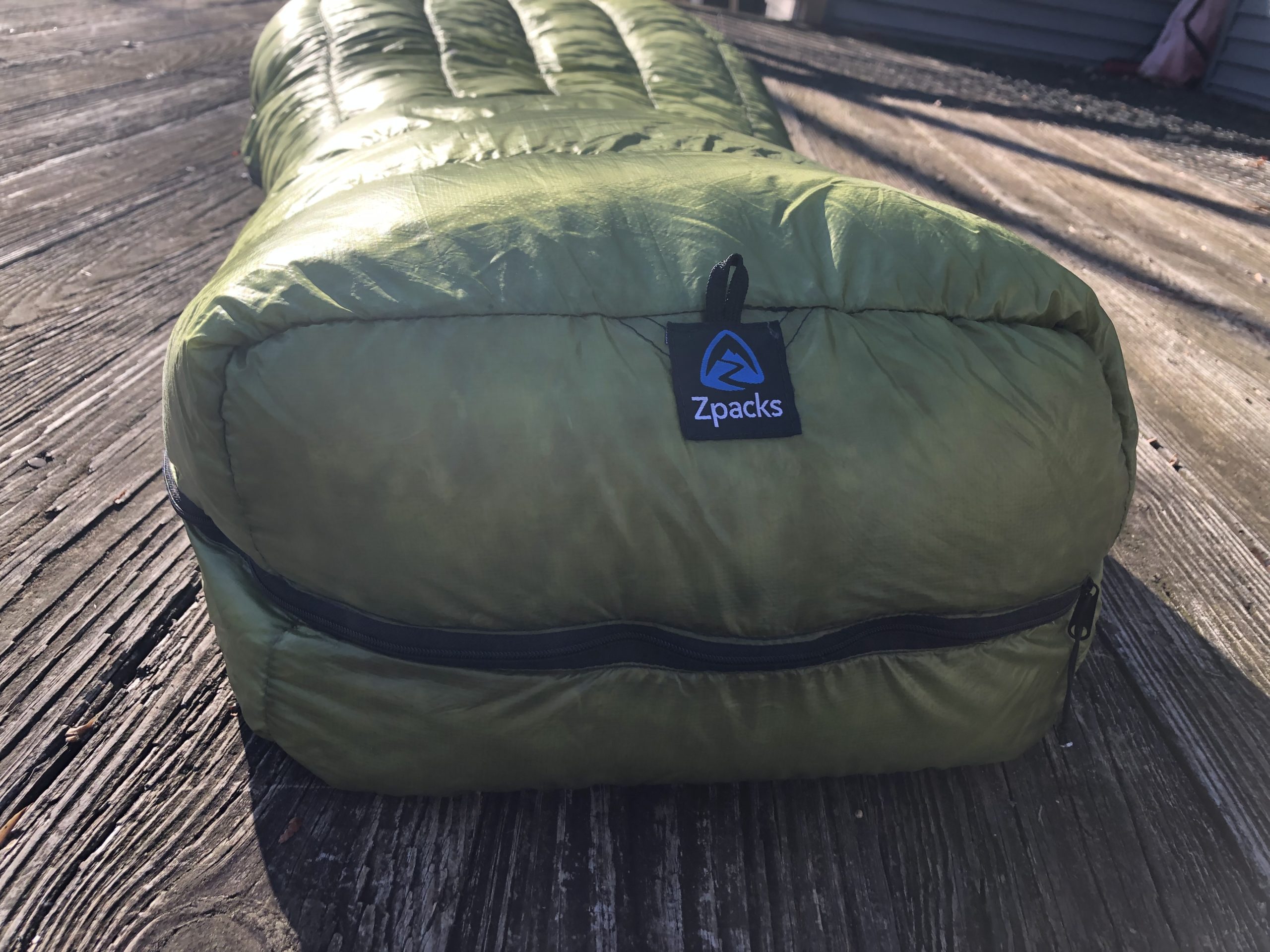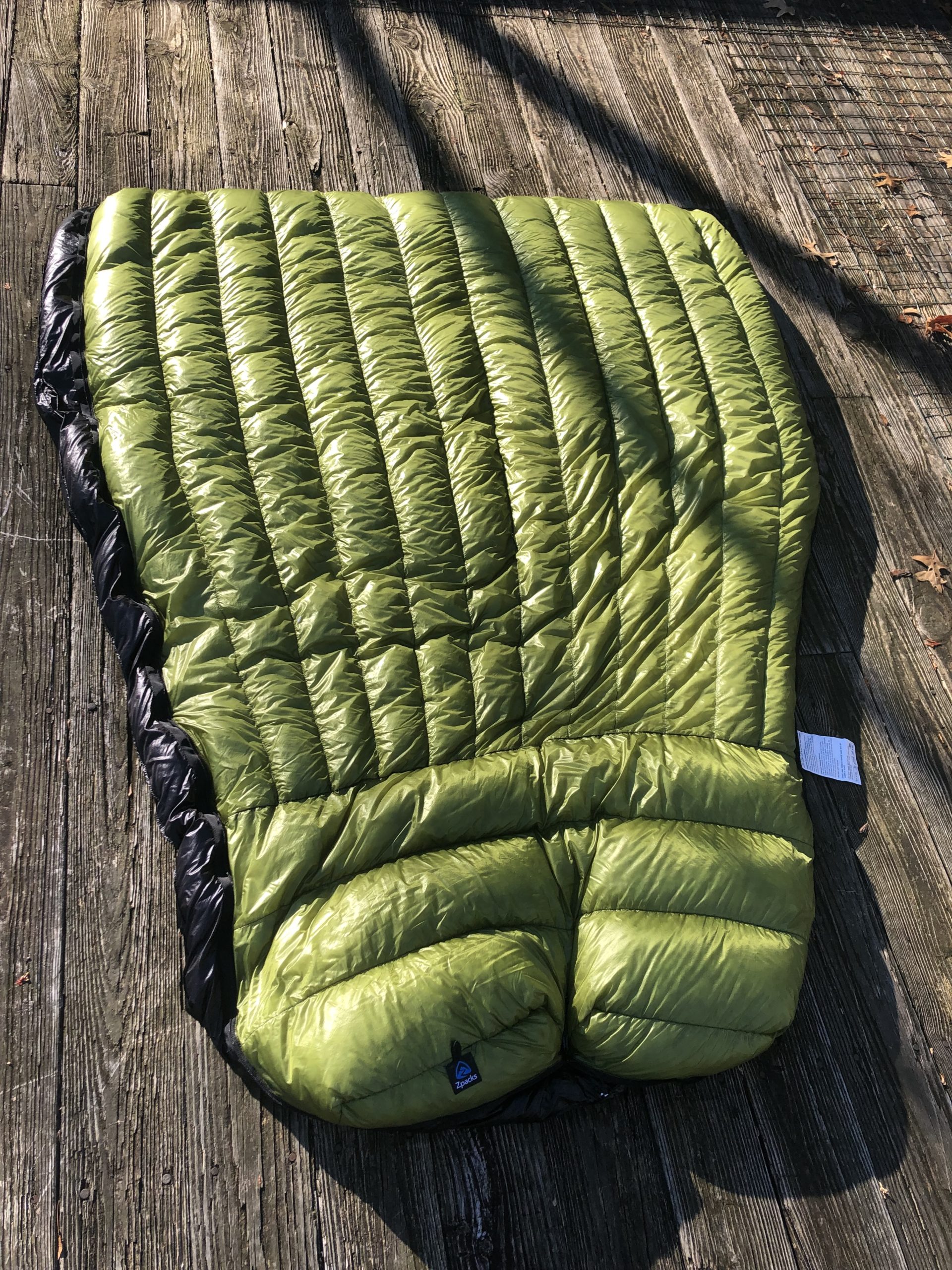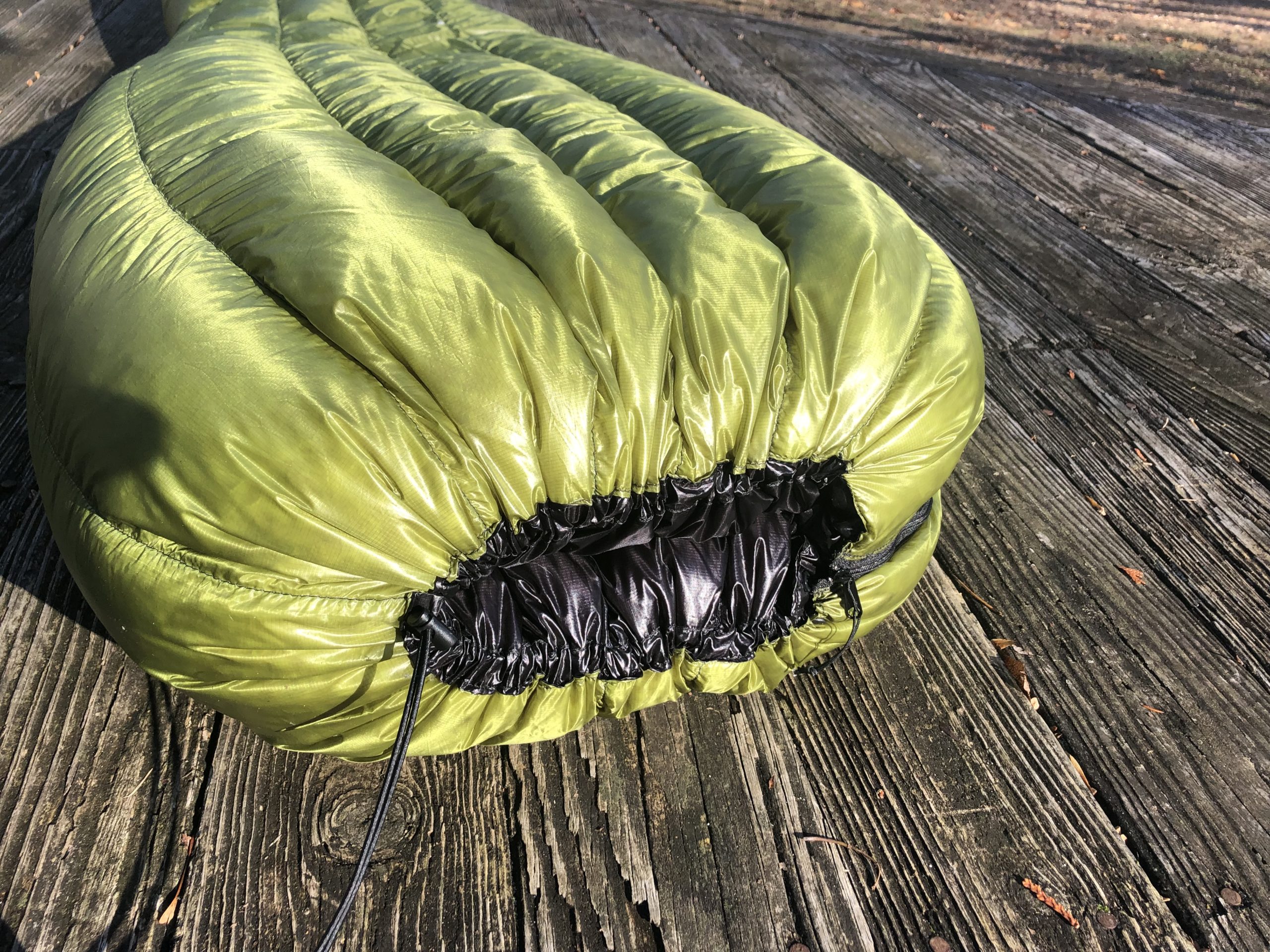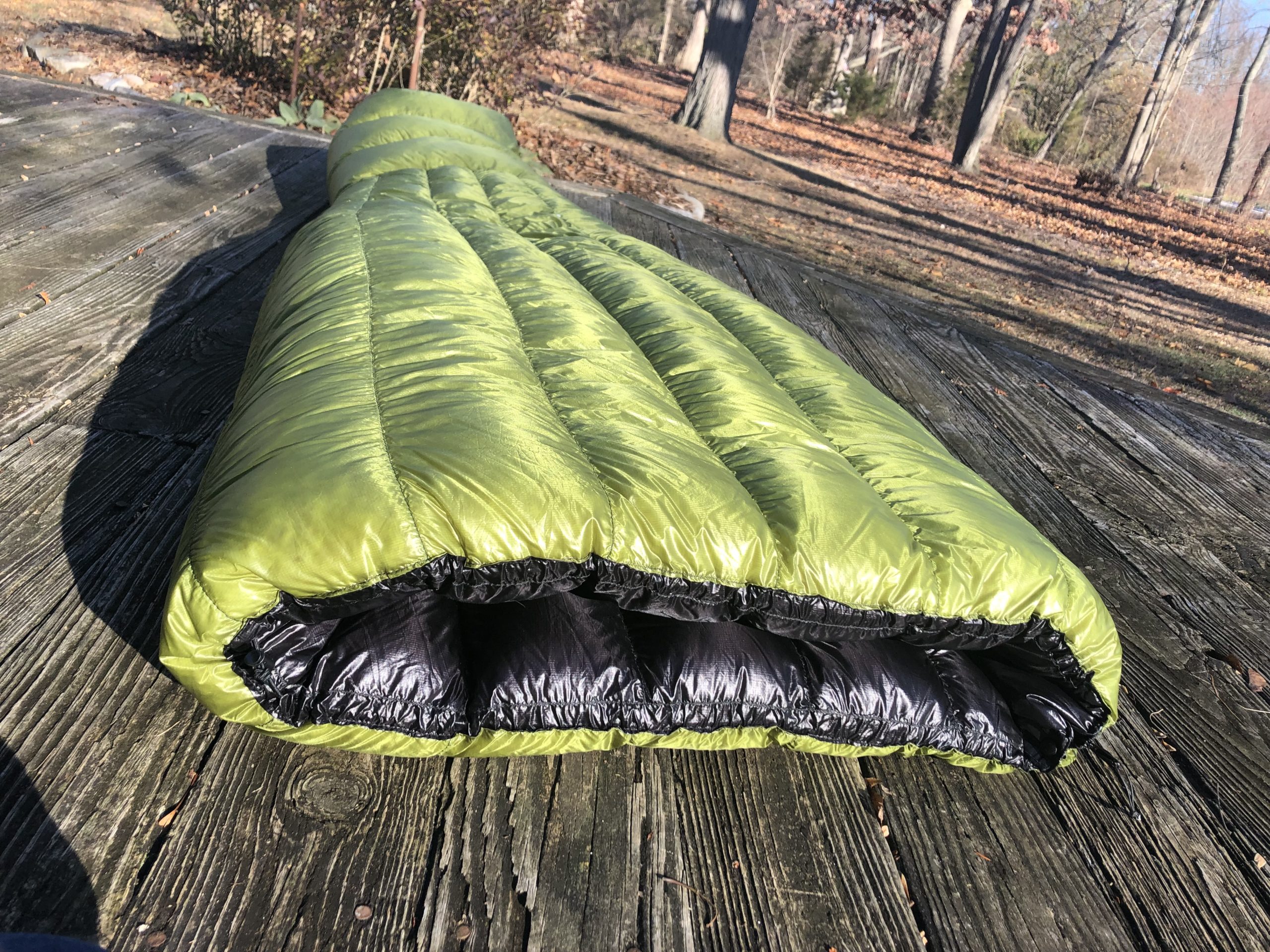Zpacks Zip Around Sleeping Bag Review (First Impressions)
I‘ve wanted to try a Zpacks sleeping bag for years, ever since a more experienced hiking friend (whom I secretly idolized) raved about her trusty 10-degree Classic bag. But since I already had a perfectly good sleeping bag (and a quilt, and a backup sleeping bag and a backup quilt and yeah OK I know I have a problem), it seemed excessive to add more chaos to my already crowded gear closet.
So I watched. And waited. Until a few weeks ago, when Zpacks launched a brand new, redesigned bag. The opportunity to test it was just too good to pass up. The Zpacks Zip Around Sleeping Bag is a more refined, versatile version of the brand’s full-zip sleeping bag. The name gives it away, really. Unlike the Full Zip, which unzips most of the way down but stops short of the footbox, the Zip Around zips all the way down and around the bottom of the footbox. When fully unzipped, you can open it completely flat like a rectangular insulated blanket.
The Zip Around is slightly heavier than its full-zip counterpart. Is that minor weight penalty worth the versatility of the wrap-around zipper?
Zpacks Zip Around Sleeping Bag At a Glance
MSRP*:
- 10-degree: $499
- 20-degree: $479
- 30-degree: $459
Weight / Fill Weight*:
- 10-degree: 26 oz / 17.7 oz
- 20-degree: 21.6 oz / 18.7 oz
- 30-degree: 16.6 oz / 19.8 oz
Materials:
- Shell and liner: .51 oz/sqyd Ventum ripstop nylon
- Insulation: DownTek 900-fill water-repellent goose down
Sizing:
- Short: 68″ long / 60″ wide at shoulder / 40″ wide at feet
- Medium: 74″ long / 60″ wide at shoulder / 40″ wide at feet
- Long: 80″ long / 60″ wide at shoulder / 40″ wide at feet
*For a medium bag, which fits users up to 6’0.
Circumstances of Review
I received the medium-length, 10-degree model of this sleeping bag in the mail just a few weeks ago—so I’ll be honest, I haven’t had much chance to field-test it yet. Therefore, this is strictly a first-impressions review. So far, I’ve slept outside in the Zip-Around bag (paired with a Six Moon Designs Gatewood tarp and a Therm-a-Rest NeoAir Xtherm pad) on several frosty nights when temperatures dipped as low as 21 degrees. I also used it fully unzipped in lieu of a comforter in my van most nights for the past few weeks.
Intended Use
This is a minimalist sleeping bag for ultralight hikers who want the draft control of a traditional sleeping bag without the concomitant claustrophobia or weight penalty. The versatility afforded by the wrap-around zipper makes it ideal for long-distance hikers who expect to encounter a wide range of nighttime temperatures, as it allows the user to fine-tune the ventilation.
I got the quilt partially with my partner in mind: he has a thing about being able to move his feet around and loves to stick them outside the footbox to dump heat during the night. If that sounds like you, take note. This might be the bag you’ve been looking for.
Features

The two-way wrap-around zipper makes it possible to be fully zipped everywhere except the bottom of the foot box so your feet have room to breathe. Mismatched socks not included.
Two-Way Wrap-Around Zipper
This is the bag’s main schtick that sets it apart from all other Zpacks sleeping bags. Now you can unzip from the shoulder all the way down to the tips of your toes and beyond, opening the bag completely flat like a blanket. It’s a two-way zipper, so you could also stay zipped at the shoulders and open it from the bottom to expose your feet.
Draft Control
This bag has a lot of zipper and technically no hood (more on that later), so effective draft control is a must if you want to stay warm. The Zip Around doesn’t have a draft collar, but it features an elastic drawcord that can be cinched tight around the neck to keep cold from pouring in from the top.
Meanwhile, an insulated draft tube runs the entire length of the zipper to keep cold air from seeping through. Although you can sleep with the zipper beneath you to eliminate drafts, it’s awkward with the shape of the footbox. The bag is really meant to be oriented with the zipper on the side, and this also makes it easier to get in and out during the night. Also, the part of the zipper that extends over the footbox can’t be protected by your body weight, making the draft tube essential.
Finally, Zpacks’ Ventum ripstop nylon shell allegedly cuts wind while remaining breathable. I haven’t had any windy nights so far and can’t comment on its performance. However, this is the same material used in Zpacks’ Ventum wind jacket, which people generally seem to like.
Vertical Box Baffles
Zpacks takes a common-sense approach to baffle design, and I am here for it. So many brands seem to overcomplicate the baffles these days! I don’t want to “customize” where all the down sits within the baffle tubes every night. I just want it to stay evenly distributed and not have cold spots. Zpacks’ vertical baffles accomplish that. The down has plenty of room to loft without any sewn-through seams to produce cold spots.
Black Liner Fabric
Both the shell and liner are made of 7D Ventum ripstop nylon. While you can customize the outer shell color (green, black, blue, or orange), the interior liner is always black. If your bag gets damp with condensation overnight, you can lay the bag black-side-up in a sunny spot and the dark color will absorb heat and help to dry it more quickly.
Premium Down
The 10-degree bag is insulated with 18.7 ounces of responsibly sourced, water-repellent, 900-fill goose down. For those not in the know, 900 is a pretty dang high fill power, indicating that this down has an excellent warmth-to-weight ratio. The plumes themselves have a water-repellent treatment that Zpacks says allows them to stay dry 90% longer than regular down. Zpacks also overstuffs the baffles by 30% to account for the inevitable compression of the down over time, which hopefully will extend the life and loft of the bag.
Temperature Ratings: How Warm Is the Zpacks Zip Around Sleeping Bag?
According to Zpacks, “While our sleeping bags and quilts have not been tested for their International Standard Organization (ISO) rating, we estimate based on feedback and use that they are closest to the ISO ‘Transition Range.'” The Transition Range falls between Comfort (the lowest temperature at which a cold sleeper remains comfortable) and Limit (the lowest temperature at which a warm sleeper remains warm enough to not shiver while curled up).
That’s still a bit vague, though. There’s typically a 10 to 15-degree Fahrenheit spread between Limit and Comfort ratings. For the sake of argument, let’s say the theoretical Comfort rating of the Zip Around would fall in the ballpark of 20-25 degrees based on its claimed 10-degree Transition rating. (I’m assuming that 10-degree rating falls near the Limit end of the Transition spectrum, if you follow me.)
In my testing, I’d put my personal Comfort rating around 25-27 degrees for this bag. Once the temps dipped into the low 20s, I started getting cold and wanted my puffy. In fairness, I’m generally a cold sleeper, so my experience with the Zip Around doesn’t raise any red flags. Their estimate of the temperature rating might be a tad optimistic but not outrageously so.
READ NEXT –
- Best Sleeping Bags for Thru-Hiking
- Best Quilts for Thru-Hiking
- The Ultimate Guide to Backpacking Sleeping Bags and Quilts for All Budgets
Zpacks Solo Quilt vs. Classic vs. Full Zip vs. Zip Around Sleeping Bag
Zpacks has three sleeping bags and a quilt in its lineup. The design is similar across all models. They all use the same materials (ripstop nylon and 900-fill Downtek) and come in the same lengths, widths, and temperature ratings. All feature the same baffle design.
The key difference is the amount of zipper. The quilt, of course, has no zipper, while the Classic, Full Zip, and Zip Around each grow progressively more zippery in their turn. Some other specs, like price and weight, differ largely as a function of zipper length. The following elaborate, non-blurry, definitely-not-just-thrown-together-in-Excel table compares the 10-degree, medium-length, standard-width versions of all four models.
Interestingly, the new Zip Around has a slightly higher fill weight (18.7 ounces) than the other three (which all have 17.8 ounces of fill). Although the Zip Around is the heaviest of the four, it would weigh less than the Full Zip if you subtracted those extra 0.9 ounces of down. The difference in reported fill weight is consistent across sizes and temperature ratings, suggesting that it’s a real thing rather than a case of transposed digits.
Zpacks Zip Around Sleeping Bag Pros

Sorry for the blurry. The makeshift “hood” doesn’t hold up to sitting up or moving around a lot, but it adds a lot of warmth when lying still.
Versatile
I love the two-way zipper. It makes for seamless transitions between sleeping bag mode, quilt mode, blanket mode, and cape mode (my personal favorite). If you choose to use it as a quilt, I like that the zipper lets you decide exactly how much footbox you want.
Also, I discovered that although this bag is hoodless, you can effectively make it hooded by sizing up in length. I ordered a Medium, which fits people up to six feet tall, even though at 5-foot-four I could easily have gotten away with a Short. I’m glad I did.
The bag comes up over my head when zipped, and when I cinch the drawcord collar, I can tuck the front part under my chin while the back part forms a perfect hood over my head and ears, leaving just my face exposed. I couldn’t be more thrilled about this accidental discovery because it makes the bag so much warmer. *Chef’s kiss*
Excellent Draft Control
For basically the same weight as an ultralight quilt, you can have a full-zip sleeping bag that offers more versatility and draft control. On warm nights I unzipped the top half and used the bag as a quilt with a deep footbox. On cold nights I cinched the collar and zipped the bag fully, grateful for the generous draft tube that prevent cold air from leaking through the zipper.
I never slept with the bag fully unzipped—it was too slippery and tended to slide off me when I tried—but blanked mode came in handy during the day when I sometimes wore it around my shoulders or in my lap.
PFC-Free DWR Treatment
Durable water-repellent finish is a great feature for any sleeping bag since almost every camper will wake up in a soggy, condensation-filled tent now and again. The DWR on this bag beads water effectively, keeping light moisture from penetrating.
The great thing about this DWR is that, unlike most formulas, it’s PFC-free. PFCs (perfluorochemicals) are a class of persistent chemicals that pose risks to environmental and, potentially, human health. They’re sometimes called “forever chemicals” because they take so long to break down. Best avoided when possible, especially for next-to-skin use.
Dry Bag Included With Purchase
The Zip Around comes with a fancy DCF dry bag for storage while backpacking. Not a cheap nylon stuff sack; an actual roll-top DCF dry bag. It’s a $35-$40 value on its own and should be more puncture-resistant than the silnylon bags I typically use. Having it included with the purchase is a major win. I’ll probably stuff the sleeping bag loose in my pack and use the dry bag to store other gear.
The sleeping bag doesn’t come with a large mesh or cotton bag for long-term storage, but it has a hang loop on the bottom of the footbox.
Zpacks Zip Around Sleeping Bag Cons
Cramped
The 60-inch width at the shoulder and hips is adequate but not roomy. I suppose cutting down on dead air space helps with thermal efficiency, but the bag felt narrower than I’m used to. This may be because I’m used to nonrestricting quilts and women’s bags that have more room in the hips, whereas this bag is unisex. Fortunately, the zipper allows you to open up the top as much as you want. In quilt mode, 60 inches is plenty to keep the shoulders covered even when side-sleeping.
Expensive
The price of this sleeping bag isn’t unfair, it’s just a big investment. A quick survey of similarly-rated down sleeping bags and quilts reveals that many are in the $450-$500-plus price range. Still, of all the potential downsides to this bag, the $500 price tag is likely to be the biggest sticking point for buyers.
Shell Material Feels Flimsy
This could be said of many paper-thin UL fabrics, but something about Zpacks’ 7D ripstop shell skeeves me out. I feel like I could accidentally put a toe through it with minimal effort. Seven-denier fabric isn’t unheard of in the world of UL sleeping bags and quilts, but you won’t see anything lighter. On the durability – weight savings spectrum, a 7D shell leans hard toward weight savings. For comparison, standard sleeping bags typically feature 20D or heavier shell fabric, while more cautious ultralight brands compromise with 10D material.
On a related note, the bag uses the same ripstop nylon for the shell and liner. Though Zpacks says Ventum doesn’t feel plasticky or sticky, I respectfully disagree. A taffeta liner would feel more luxurious. Taffeta would also probably make the bag even more expensive, of course. Can’t have it all.
Overall Value
So far, I’m impressed with the Zpacks Zip Around sleeping bag’s versatility, draft control, and warmth-to-weight ratio. The bag’s advertised “transition” temperature rating seems a tad optimistic but reasonably accurate overall relative to other bags I’ve tested. I came away with a positive first impression of the bag and plan to continue testing it to see how it holds up to long-term use.
Shop the Zpacks Zip Around Sleeping Bag
Comparable Sleeping Bags
Feathered Friends Flicker UL Down Quilt
- MSRP: $489
- Weight: 25 oz
- MSRP: $469
- Weight: 23.2 oz
The Zpacks Zip Around sleeping bag was donated for purpose of review.
This website contains affiliate links, which means The Trek may receive a percentage of any product or service you purchase using the links in the articles or advertisements. The buyer pays the same price as they would otherwise, and your purchase helps to support The Trek's ongoing goal to serve you quality backpacking advice and information. Thanks for your support!
To learn more, please visit the About This Site page.










Comments 3
Cool bag, but way too warm looking. Idk if I would sleep well at at all in 30°. 20° is not what my sleeping room is set to either (~16°). And the 10° bag I have packs down so much smaller than this bag, is lighter and has a hood too. I bet it is m7ch cheaper also. Like unrivaled cheaper. So cheap, you won’t even believe me: it is a McKinley 10° rated lightweight trekking bag that cost around 19.99$.
If I were sleeping in winter I’d have a sleeping bag rated for -15°. It regularly gets ice cold wherr I live and -15 is not even the coldest here. Sometimes -25 is standard?
In the 30° bag I’d be not sleeping well: way too hot and this temperature is something I only come across on an extremely hot summer night, let alone sleeping in a down bag. My preferred method would be to just sleep in my underwear, and sleep only under a duvet cover. Hot hot hot?. This summer was fine and I did not experience tese conditions even. So useless paying 457$ for a 30° bag my gosh man. Who’d ever buy that. And the 10° bag for 499$?
Save 479$, get a 19.99$ 10° lightweight McKinley bag and have a bag better in all aspects. Get a bag for freezing temperatures if you like to camp in winter. It will save you a really uncomfortabe night. Don’t buy this product. Its heavy, expensive, not even a lightweight quilt (a small blanket is just as warm and lighter than the 20° bag), just never buy the 30° bag (I don’t expect it to be that hot when camping ever, so uncomfortable nights bro). Dollarstore bahs are cheaper than this and warmer than these. Yeah.
Zip around and find out? ?
Seems like a throwback to the style of sleeping bags I grew up with, only $450 more expensive.
I’ll stick with my Western Mountaineering and Mountain Hardwear bags or my Hammockgear topquilts. They each have their place.
I’ve used my 10F Zpacks quilt on trips down into the teens with just some Marino wools on under and slept like a king. I was on an Xtherm pad, and that made the biggest difference. Everything I have for my UL setup is Zpacks and I’m telling you that you won’t find better gear for the price. Additionally, their customer support is the best in the industry. Absolutely amazing folks.
You can’t go wrong with Zpacks. What you can do is assume that other gear is made to the Zpacks standard, and you would be VERY wrong. Try calling someone about your tent, backpack, or sleeping bag and actually getting support. I’ve already fought those battles and I’m telling you all, Zpacks holds the trophy way above everyone else.
Don’t believe me? Give them a call. I wouldn’t trust my life and safety to anyone else in this industry.